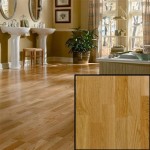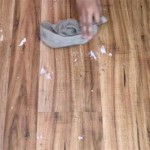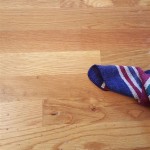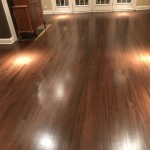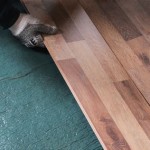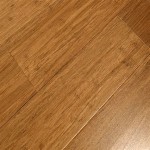Expert Advice on Hardwood Flooring in the USA
Hardwood flooring remains a popular and enduring choice for homeowners across the United States. Its appeal lies in its aesthetic versatility, durability, and potential to increase a property's value. However, selecting, installing, and maintaining hardwood flooring requires careful consideration to ensure a lasting and satisfying investment. This article provides expert advice on navigating the complexities of hardwood flooring in the US market.
The initial step involves understanding the different types of hardwood available. These can be broadly categorized into solid hardwood and engineered hardwood, each with unique characteristics and suitability for various applications. Solid hardwood comprises a single piece of wood milled from a tree. It is known for its longevity and can be sanded and refinished multiple times throughout its lifespan. Engineered hardwood, on the other hand, consists of multiple layers of wood veneer bonded together, with a top layer of solid hardwood. This construction makes it more dimensionally stable than solid hardwood, allowing for installation in areas with varying humidity levels.
Species selection is another crucial factor influencing the overall look and performance of hardwood flooring. Common hardwood species include oak, maple, hickory, cherry, and walnut, each exhibiting distinct grain patterns, colors, and hardness levels. The Janka hardness scale is a useful tool for comparing the relative hardness of different wood species. A higher Janka rating indicates a greater resistance to dents and scratches. Oak, particularly red oak and white oak, is a widely used and relatively affordable option, known for its durability and ability to accept stains well. Maple offers a more subtle grain pattern and a lighter color, while hickory is prized for its rustic appearance and exceptional hardness. Cherry provides a rich, reddish-brown hue that deepens with age, and walnut is renowned for its elegant dark tones and distinctive grain.
Beyond species and construction, consider the finish applied to the hardwood flooring. Finishes not only enhance the aesthetic appeal of the wood but also provide a protective layer against wear and tear. Common finish options include polyurethane, acrylic-urethane, moisture-cured urethane, and penetrating oil finishes. Polyurethane finishes are durable and water-resistant, making them a popular choice for high-traffic areas. Acrylic-urethane finishes offer similar protection but are typically more flexible and less prone to cracking. Moisture-cured urethane finishes are exceptionally durable but require professional application. Penetrating oil finishes, such as tung oil or linseed oil, penetrate the wood pores, providing a natural look and feel. They require regular maintenance and are less resistant to scratches than polyurethane finishes.
Key Considerations Before Installation
Before embarking on a hardwood flooring installation project, several factors warrant careful consideration. These include assessing the subfloor, addressing moisture concerns, and planning for acclimatization.
The subfloor, the structural layer beneath the finished flooring, must be clean, level, and structurally sound. Any imperfections, such as cracks or unevenness, should be addressed before installation to ensure a smooth and stable surface for the hardwood flooring. Common subfloor materials include plywood and concrete. Plywood subfloors should be properly fastened and free from rot or decay. Concrete subfloors should be thoroughly cleaned and tested for moisture content.
Moisture is a significant concern when installing hardwood flooring. Excessive moisture can cause the wood to warp, cup, or buckle. Before installation, the moisture content of both the subfloor and the hardwood flooring should be measured using a moisture meter. The ideal moisture content will vary depending on the wood species and geographic location. A vapor barrier should be installed over concrete subfloors to prevent moisture from migrating into the hardwood flooring. In areas with high humidity, a dehumidifier may be necessary to maintain optimal moisture levels.
Acclimatization is the process of allowing the hardwood flooring to adjust to the ambient temperature and humidity of the installation environment. This typically involves storing the flooring in the room where it will be installed for several days or even weeks before installation. Acclimatization helps to minimize expansion and contraction after installation, reducing the risk of gaps or buckling. The manufacturer's instructions should be consulted for specific acclimatization recommendations.
Installation Methods and Best Practices
The method of installation significantly impacts the long-term performance and appearance of hardwood flooring. Common installation methods include nail-down, glue-down, and floating. The choice of method depends on the type of hardwood flooring, the subfloor material, and the desired aesthetic.
The nail-down method is typically used for solid hardwood flooring installed over a wood subfloor. This involves securing the flooring to the subfloor using nails or staples. The nail-down method provides a strong and stable installation but is not suitable for concrete subfloors. Proper nailing techniques are essential to avoid splitting the wood or damaging the finish. Experienced installers use specialized nail guns that drive the fasteners at the correct angle and depth.
The glue-down method is suitable for both solid and engineered hardwood flooring installed over concrete or wood subfloors. This involves applying a layer of adhesive to the subfloor and pressing the flooring into place. The glue-down method provides excellent stability and is particularly well-suited for wider planks or complex patterns. The type of adhesive used should be specifically designed for hardwood flooring and compatible with the subfloor material. Proper surface preparation is crucial to ensure a strong bond between the flooring and the subfloor.
The floating method is typically used for engineered hardwood flooring. This involves installing the flooring over an underlayment without directly attaching it to the subfloor. The flooring planks are connected to each other using a tongue-and-groove system, creating a single, unified surface that "floats" above the subfloor. The floating method is relatively easy to install and is suitable for a variety of subfloor materials. However, it may not be as stable as the nail-down or glue-down methods, particularly in areas with heavy traffic.
Regardless of the installation method, it is crucial to follow the manufacturer's instructions carefully. These instructions provide specific guidance on subfloor preparation, acclimatization, adhesive selection, and installation techniques. Deviating from the manufacturer's instructions may void the warranty and compromise the performance of the flooring.
Maintaining and Protecting Hardwood Floors
Proper maintenance is essential to prolong the life and beauty of hardwood flooring. Regular cleaning and preventative measures can help to protect the finish and prevent scratches, dents, and water damage.
Regular cleaning should include sweeping, vacuuming, or dust mopping to remove dirt, dust, and debris. A microfiber mop is particularly effective for removing fine particles without scratching the finish. Liquid spills should be wiped up immediately to prevent staining or water damage. Avoid using excessive water when cleaning hardwood floors, as this can seep into the seams and cause warping or swelling.
Protective measures can help to minimize wear and tear on hardwood floors. Place mats or rugs at entrances to trap dirt and moisture. Use furniture pads under the legs of chairs and tables to prevent scratches. Avoid wearing shoes with high heels or cleats on hardwood floors. Trim pets' nails regularly to prevent scratches from their claws. Consider using a floor protector on areas that experience heavy traffic, such as hallways and entryways.
Refinishing is a process that involves sanding down the existing finish and applying a new coat of finish. This can restore the appearance of hardwood flooring that has become worn, scratched, or faded. Solid hardwood flooring can typically be refinished multiple times throughout its lifespan, while engineered hardwood flooring can only be refinished a limited number of times, depending on the thickness of the top layer of hardwood veneer. Refinishing is a complex and time-consuming process that is best left to experienced professionals. They have the necessary equipment and expertise to sand the floor evenly, apply the finish smoothly, and avoid damaging the wood.
Addressing specific issues promptly can prevent them from worsening. Water damage, such as from leaks or spills, should be addressed immediately to prevent warping, cupping, or staining. Scratches and dents can be repaired using wood filler or touch-up kits. Gaps between planks can be filled with wood putty or caulk. If the flooring is severely damaged, it may be necessary to replace individual planks or sections of flooring.
By understanding the different types of hardwood flooring, proper installation techniques, and the importance of regular maintenance, homeowners can ensure that their investment in hardwood flooring provides lasting beauty and value for years to come. Seek professional advice when needed to navigate the complexities of the hardwood flooring market and make informed decisions that align with specific needs and preferences.

2025 Flooring Trends America
%202.jpg?strip=all)
Light Vs Dark Hardwood Flooring America

Popular Flooring For Your Home America

Interesting Hardwood Layout Patterns Flooring America

Types Of Hardwood Flooring Wood Species And Construction Options Reallyfloors America S Est

Flooring Types Pros And Cons Mr Handyman

Can Hand Sc Hardwood Floors Be Refinished Reallyfloors America S Est Flooring

Can You Glue Down Solid Wood Flooring Hardwood Guide Reallyfloors America S Est

2025 Flooring Trends This Year S Top 5 More

Should Floors Be Darker Or Lighter Than Walls Find The Perfect Combination Reallyfloors America S Est Hardwood Flooring
See Also
